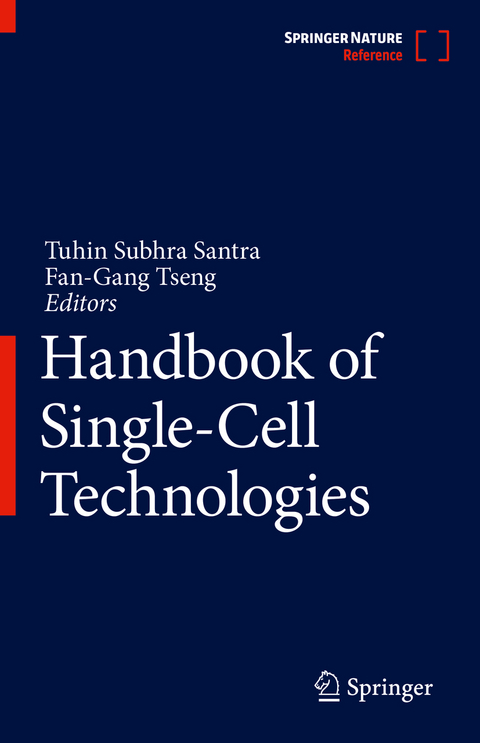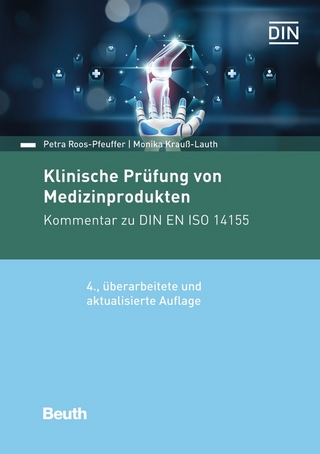
Handbook of Single-Cell Technologies
Springer Verlag, Singapore
978-981-10-8952-7 (ISBN)
The different sections cover different aspect of single cell analysis and applications with their advantages, limitations, and future challenges. The book has covered how different physical energies such as optical, electrical, and mechanical energy have been applied for single cell therapy and analysis. The recent advanced micro/nanofluidic devices have been employed for single-cell counting, manipulation, cultivation, separation, isolation, lysis, printing and patterning and host-viral interaction at single-cell level. Various chemical approaches for single-cell analysis have been discussed, such as liposome mediated materials transfer at single-cell and their analysis, discovery of antibody via single-cell, high-throughput screening of antigen-specific antibody-secreting cells, and biomolecular secretion analysis of individual cells. Moreover, different single-cell omics such asgenomics, proteomics and transcriptomics have been discussed using microfluidic technologies as well as conventional approaches.
The role of single cell analysis in system biology and biocatalysis have been discussed in detail. The book describes single-cell phenotyping of heterogeneous tissue, stimulation, and instant reaction quenching technology for biochemical kinetic analysis, large scale single-cell assay for the identification of biocatalysts and analytical techniques for single-cell studies in microbiology. The role of single-cell analysis in cancer, such as single-cell adhesion and cancer progression, single-cell technologies for cancer therapy, analytical technology for single cancer cell analysis, and biophysical markers for cancer cell analysis have been discussed. The flow cytometry based high throughput single-cell analysis have been well emphasized. Finally this book has covered single-cell electrophysiology, single-cell sensing and size measurement using mechanical and microwave resonators, molecular force spectroscopy for cell adhesion measurement, micro-tweezers and force microscopy techniques for single-cell mechanobiological analysis, mass spectrometry and acoustic tweezers for single-cell manipulation and analysis.
This book is intended for academic and industrial researchers, undergraduate and graduate students in the fields of biomedical engineering, bio-micro/nanoengineering, and bio-micro/nano fabrication for single-cell analysis. It can be used for courses on bio-MEMS/bio-NEMS, biomicrofluidics, bio-micro/nanofabrications, micro/nanofluidics, biophysics, single cell analysis, bionanotechnology, drug delivery systems and biomedical microdevices. Collective contributions from respected experts, have brought diverse aspects of single-cell technologies in a single hand book. This will benefit researchers and practitioners in the biotechnology industry for different diseases analysis, therapeutics, diagnostics, drug discovery, drug screening etc.
In addition to hard copies, the book will be available online and will often be updated by the authors.
Tuhin Subhra Santra is Assistant Professor in the Department of Engineering Design at the Indian Institute of Technology Madras, India, from July 2016. He was a tenure track “Honorary Visiting Professor” at National Tsing Hua University” Taiwan from 2108 to 2020, and he was a “Visiting Professor” at the University of Cambridge, UK, in 2019. Dr. Santra received his Ph.D. degree in Bio-Nano Electro Mechanical Systems (Bio-NEMS) from National Tsing Hua University (NTHU), Taiwan, in 2013. Dr. Santra was a Postdoctoral Researcher at the California NanoSystems Institute (CNSI), Universityof California, Los Angeles (UCLA), USA, from 2015 to 2016. His main research areas are Bio-NEMS, MEMS, single cell technology,single molecule detection, biomedical micro-/nano devices, nanomedicine, etc. Currently, Dr. Santra is serving as a Guest Editor for Cells, Micromachines, MDPI Journals and Frontiers of Bioengineering and Biotechnology. He served as a Guest Editor for Cells, MDPI, in 2020; International Journal of Molecular Sciences (IJMS) in 2018, 2017, and 2015; Sensors in 2016; Molecules in 2016; and Micromachines in 2020 and 2013, among others. He was conference chair and committee member of IEEE-NEMS in 2017, 2020 and 2021. Dr. Santra has received many honors and awards such as “DBT/Wellcome Trust India Alliance Fellowship” in 2018, Honorary Research Fellow from National Tsing Hua University, Taiwan, in 2018, Bharat Bikas Award in 2017, IEEE-NEMS best conference paper award in 2014, a silver medal from Vidyasagar University in 2004, etc. He is Editor of the book entitled Nanomaterials and Their Biomedical Applications by Springer Nature, Singapore, in 2021; Microfluidics and Bio-NEMS: Devices and Applications by Jenny Stanford Publisher, Singapore, in 2020; and Essential of Single Cell Analysis Springer, Germany, in 2016, among others. He published more than 6 books, 35 SCI journals, 20 book chapters, 15 US/Taiwan/Indian patents, and 20 international conference proceedings in his research field. Dr. Fan-Gang (kevin) Tseng received his Ph.D. degree in Mechanical Engineering from UCLA, USA, in 1998. He joined Engineering and System Department of National Tsing Hua University in 1999 and advanced to Professor in 2006. He was the Chairman of ESS Department in NTHU (2010–2013), Associate Vice President for Global Affair in NTHU (2013), a Visiting Scholar of Koch Institute of Integrated Cancer Research in MIT USA (2014–2015), and the Dean of Nuclear Science College in NTHU (2016–2017). He is currently a distinguished professor of ESS Department as well as NEMS I., and the Vice President for R&D at NTHU (2017–present), as well as a Research Fellow with Academia Sinica Taiwan (2006–present). He was elected an ASME fellow in 2014. His research interests are in the fields of BioNEMS, biosensors, micro-fluidics, tissue chips, and fuel cells. He received 60 patents, wrote 8 book chapters, and published more than 260 SCIjournal papers and 400 conference technical papers.He has received several awards, including Shakelton Scholar, twice National Innovation Award, twice Outstanding in Research Award, and Mr. Wu, Da-Yo Memorial Award from MOST, Taiwan, and more than20 best papers and other awards in various international conferences and competitions. He is among the editorial board of several journals including IJMS, Cells, Micromachines, and Applied Science, and also the general co-chair for MicroTas 2018 and a board member of CBMS from 2018 to 2022.
Physical methods for single-cell technology.- Fluidic System and Integration.- Chemical methods for single-cell technology.- Single-cell analysis in system biology and omics.- Single-cell analysis for biocatalysis.- Single-cell technology in cancer.- Flow cytometry based single cell analysis.- Spectrum analysis method, targets, imaging and applications.
| Erscheinungsdatum | 12.11.2021 |
|---|---|
| Reihe/Serie | Handbook of Single Cell Technologies |
| Zusatzinfo | 274 Illustrations, color; 22 Illustrations, black and white; XXIII, 1096 p. 296 illus., 274 illus. in color. |
| Verlagsort | Singapore |
| Sprache | englisch |
| Maße | 155 x 235 mm |
| Themenwelt | Medizin / Pharmazie ► Physiotherapie / Ergotherapie ► Orthopädie |
| Naturwissenschaften ► Biologie ► Zellbiologie | |
| Naturwissenschaften ► Chemie ► Technische Chemie | |
| Technik ► Elektrotechnik / Energietechnik | |
| Technik ► Medizintechnik | |
| Schlagworte | genomics • Mechanoporation • Metabolomics • Optoporation • Single cell electroporation • Single cell heterogeneity • Single cell in system biology • Single cell intracellular and extracellular delivery • Single cell proteomics • Single cell sequencing • Transcriptomics |
| ISBN-10 | 981-10-8952-3 / 9811089523 |
| ISBN-13 | 978-981-10-8952-7 / 9789811089527 |
| Zustand | Neuware |
| Informationen gemäß Produktsicherheitsverordnung (GPSR) | |
| Haben Sie eine Frage zum Produkt? |
aus dem Bereich


